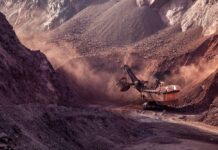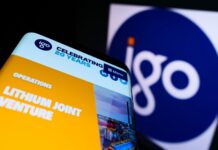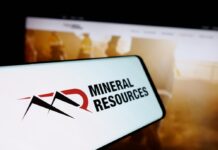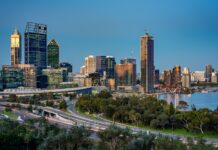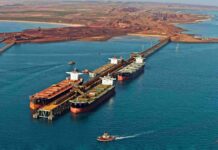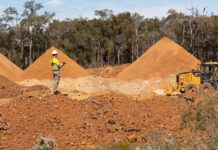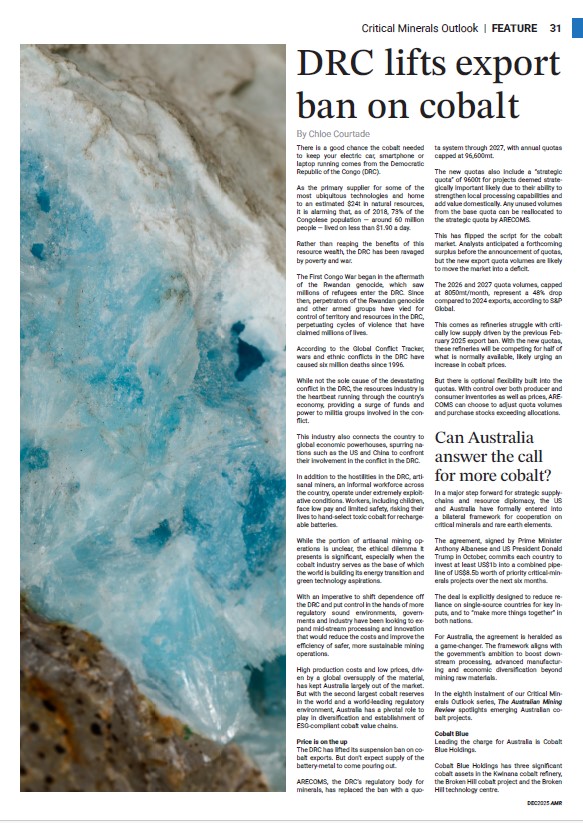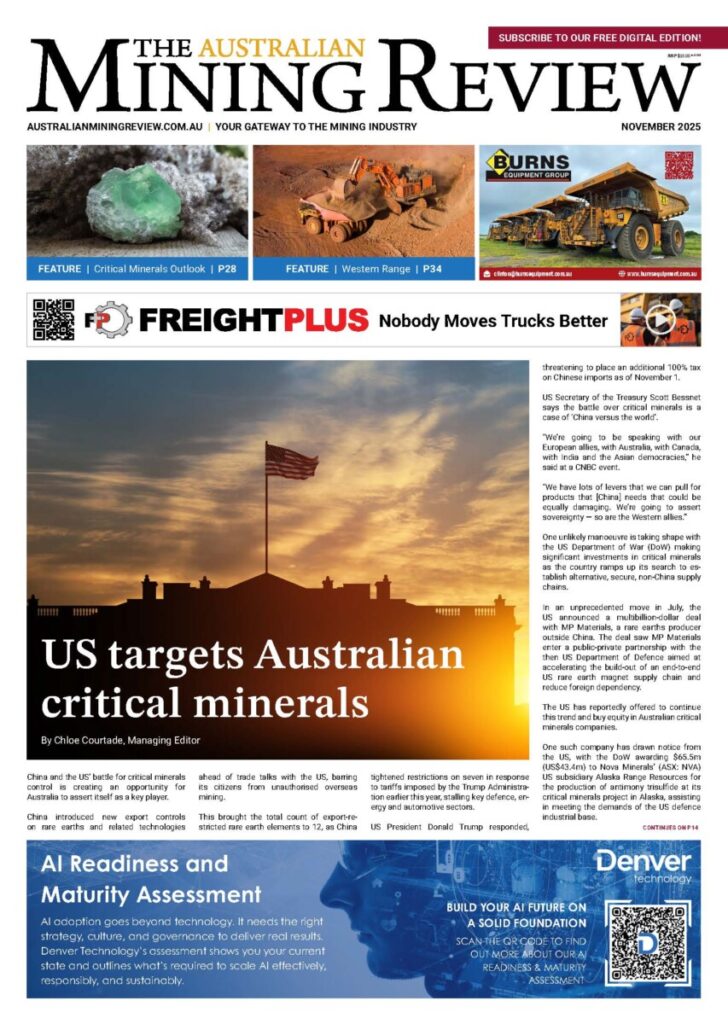DRC lifts export ban on cobalt
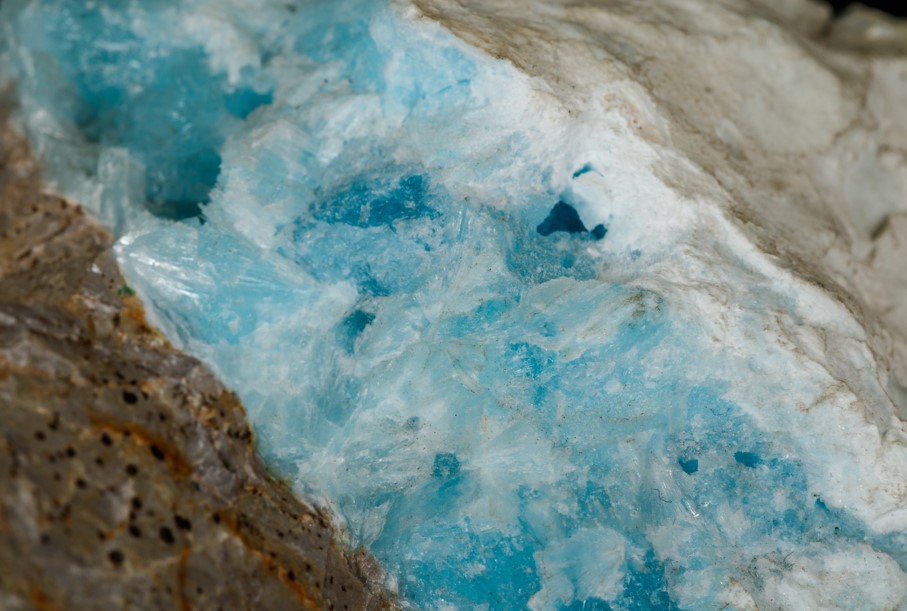
There is a good chance the cobalt needed to keep your electric car, smartphone or laptop running comes from the Democratic Republic of the Congo (DRC).
As the primary supplier for some of the most ubiquitous technologies and home to an estimated $24t in natural resources, it is alarming that, as of 2018, 73% of the Congolese population — around 60 million people — lived on less than $1.90 a day.
Rather than reaping the benefits of its resource wealth, the DRC has been ravaged by poverty and war.
The First Congo War began in the aftermath of the Rwandan genocide, which saw millions of refugees enter the DRC. Since then, perpetrators of the Rwandan genocide and other armed groups have vied for control of territory and resources in the DRC, perpetuating cycles of violence that have claimed millions of lives.
According to the Global Conflict Tracker, wars and ethnic conflicts in the DRC have caused six million deaths since 1996.
While not the sole cause of the devastating conflict in the DRC, the resources industry is the heartbeat running through the country’s economy, providing a surge of funds and power to militia groups involved in the conflict.
This industry also connects the country to global economic powerhouses, spurring nations such as the US and China to confront their involvement in the conflict in the DRC.
In addition to the hostilities in the DRC, artisanal miners, an informal workforce across the country, operate under extremely exploitative conditions. Workers, including children, face low pay and limited safety, risking their lives to hand-select toxic cobalt for rechargeable batteries.
While the portion of artisanal mining operations is unclear, the ethical dilemma it presents is significant, especially when the cobalt industry serves as the base on which the world is building its energy transition and green technology aspirations.
With an imperative to shift dependence off the DRC and put control in the hands of more regulatory sound environments, governments and industry have been looking to expand mid-stream processing and innovation that would reduce the costs and improve the efficiency of safer, more sustainable mining operations.
High production costs and low prices, driven by a global oversupply of the material, has kept Australia largely out of the market. But with the second largest cobalt reserves in the world and a world-leading regulatory environment, Australia has a pivotal role to play in diversification and establishment of ESG-compliant cobalt value chains.
Price is on the up
The DRC has lifted its suspension ban on cobalt exports. But don’t expect supply of the battery-metal to come pouring out.
ARECOMS, the DRC’s regulatory body for minerals, has replaced the ban with a quota system through 2027, with annual quotas capped at 96,600mt.
The new quotas also include a “strategic quota” of 9600t for projects deemed strategically important likely due to their ability to strengthen local processing capabilities and add value domestically. Any unused volumes from the base quota can be reallocated to the strategic quota by ARECOMS.
This has flipped the script for the cobalt market. Analysts anticipated a forthcoming surplus before the announcement of quotas, but the new export quota volumes are likely to move the market into a deficit.
The 2026 and 2027 quota volumes, capped at 8050mt/month, represent a 48% drop compared to 2024 exports, according to S&P Global.
This comes as refineries struggle with critically low supply driven by the previous February 2025 export ban. With the new quotas, these refineries will be competing for half of what is normally available, likely urging an increase in cobalt prices.
But there is optional flexibility built into the quotas. With control over both producer and consumer inventories as well as prices, ARECOMS can choose to adjust quota volumes and purchase stocks exceeding allocations.
Can Australia answer the call for more cobalt?
In a major step forward for strategic supply-chains and resource diplomacy, the US and Australia have formally entered into a bilateral framework for cooperation on critical minerals and rare earth elements.
The agreement, signed by Prime Minister Anthony Albanese and US President Donald Trump in October, commits each country to invest at least US$1b into a combined pipeline of US$8.5b worth of priority critical-minerals projects over the next six months.
The deal is explicitly designed to reduce reliance on single-source countries for key inputs, and to “make more things together” in both nations.
For Australia, the agreement is heralded as a game-changer. The framework aligns with the government’s ambition to boost downstream processing, advanced manufacturing and economic diversification beyond mining raw materials.
In the eighth instalment of our Critical Minerals Outlook series, The Australian Mining Review spotlights emerging Australian cobalt projects.
Cobalt Blue
Leading the charge for Australia is Cobalt Blue Holdings (ASX: COB).
Cobalt Blue Holdings has three significant cobalt assets in the Kwinana cobalt refinery, the Broken Hill cobalt project and the Broken Hill technology centre.
The company continues to make strategic strides across its key projects, positioning itself at the nexus of Australia’s critical minerals expansion and the evolving dynamics of the global cobalt market.
Cobalt Blue Holdings investor relations and commercial manager Joel Crane speaks with The Australian Mining Review on the company’s forward-looking strategies and recent advancements.
Cobalt Blue Holding’s outlook is shaped by pronounced trends in the cobalt market, including the DRC’s temporary export bans and strict new quotas. These actions are expected to curtail oversupply and could drive price volatility that both challenges and creates opportunities for non-African producers like Cobalt Blue.
“What people are willing to pay more for is the supply chain risk, or to put it more bluntly, ex China premium, because that’s what all the governments are talking about,” Mr Crane said.
Broken Hill cobalt project
The Broken Hill cobalt project is the one of the world’s largest, undeveloped cobalt resources, according to Cobalt Blue.
Despite the temporary pause of the definitive feasibility study (DFS) for the Broken Hill cobalt project, Cobalt Blue has maintained momentum through targeted optimisation efforts.
If realised, Cobalt Blue believes the project could become a generational operation at the heart of Australia’s rise as a critical minerals superpower.
“We continue to optimise our flow sheet technology and process at our Broken Hill technology centre, simply because when we fire the DFS back up, we’ll be looking to have a leaner, slightly smaller, but higher margin project,” Mr Crane said.
Cobalt Blue recently secured an extension of its Major Project Status for the Broken Hill cobalt project for three years. While this does not progress the mine’s construction alone, it signals crucial federal support to global investors.
Major Project Status acknowledges the strategic significance of the project in the delivery of Federal Government’s A Future Made in Australia agenda. Major Project Status also enhances the prospects for the project to move into development, with upside for Cobalt Blue’s other projects, including the Kwinana cobalt refinery.
Broken Hill technology centre
Originally established to validate the full flowsheet of the Broken Hill cobalt project, the technology centre now supports Cobalt Blue Holding’s R&D efforts and innovations.
The technology centre continues to optimise the refinery’s flowsheet with a range of feedstocks, including cobalt hydroxide, cobalt-nickel sulphides and battery black mass.
Current testwork aims to confirm the refinery’s ability to process battery black mass, a growing, domestic-sourced potential feedstock stream from recycled batteries and e-waste.
Samples have been received from two Australian producers, with leaching studies underway targeting cobalt, nickel and manganese – metals already central to the refinery’s flowsheet. Lithium recovery options will be evaluated in the next phase, highlighting the potential to expand into broader battery material recycling.
At the technology centre, Cobalt Blue is also focused on the optimisation and development of the thermal decomposition of pyrite in partnership with the Sustainable Minerals Institute from The University of Queensland.
Further work is underway to explore lower reaction temperatures to reduce energy consumption and to investigate kiln designs that improve materials handling and minimise equipment requirements.
Kwinana cobalt refinery
The refinery would be Australia’s first dedicated cobalt refinery to produce high-purity cobalt sulphate for the lithium-ion industry and high-grade cobalt metal for defence and industry, according to Cobalt Blue Holdings.
Cobalt Blue Holdings is progressing towards final investment decision, having recently received a Works Approval from the WA Department of Water and Environmental Regulation.
Cobalt Blue Holdings is working to secure offtake, financing and feedstock agreements for the refinery.
The company has already received letters of intent (LOI) from buyers of cobalt sulphate. These LOIs, with Iwatani Corporation’s 30% share of product offtake, would cover about 70% of the refineries initial 3000tpa capacity, according to Cobalt Blue Holdings.
Cobalt Blue Holdings has also executed a contract with Glencore International AG. This would see Glencore supplying the refinery with cobalt hydroxide feedstock.
Australia’s cobalt prospects
In addition to Cobalt Blue, there are a handful of investment-ready projects that could help catapult Australia as a major producer.
Kalgoorlie nickel project and Goongarrie Hub
Overview: Ardea Resources’ (ASX: ARL) Kalgoorlie nickel project (KNP) in WA hosts the largest nickel-cobalt resource in Australia and one of the largest in the developed world, at 854mt at .71% nickel and .045% cobalt for 6.1mt of contained nickel and 386kt of contained cobalt. This places the company in a prime position to provide essential supplies of ESG-compliant nickel and cobalt, along with other critical minerals such as scandium.
The Goongarrie Hub within the KNP is located 70km northwest of the mining centre the City of Kalgoorlie-Boulder, with resources of 584mt at .69% nickel and .043% cobalt for 4mt of contained nickel and 250kt of contained cobalt.
Low strip ratio open-pit mining will feed 3.5mtpa goethite dominated ore into two high-pressure acid leach autoclaves and a .5mtpa atmospheric leach circuit over a 40+ year life.
ARL’s prefeasibility study (PFS) considered proven hydrometallurgical processing to produce a mixed nickel/cobalt hydroxide precipitate. Power will be generated utilising the waste steam from the on-site acid plant, reducing carbon dioxide emissions.
Status: The 2023 Goongarrie Hub PFS confirmed the project’s status as one of the world’s largest, lowest-cost sources of battery materials.
The Project definitive feasibility study (DFS), commenced in May 2024 and is assessing a switch to a higher purity mixed sulphide precipitate final product.
With major drilling and metallurgical testwork programs now largely complete, the team is focused on interpreting results, refining models, completing detailed engineering design and drafting the initial chapters of the DFS.
In April 2024, ARL selected Sumitomo Metal Mining and Mitsubishi Corporation as its development partners, who are earning a 50% interest in the Goongarrie Hub.
Kalkaroo
Overview: Havilah Resources’ (ASX: HAV) Kalkaroo deposit is one of the largest undeveloped open pit copper-gold deposits in Australia, containing JORC Mineral Resources of 1.1mt copper, 3.1moz of gold and 23.2kt of cobalt.
The orebody is open at depth and along strike and has excellent potential for resource expansion with further drilling.
Regional exploration during the past 12 months has advanced several nearby multicommodity copper-critical minerals prospects that could potentially provide additional ore feed for Kalkaroo.
Mining is likely to be by conventional open-pit methods. The ore is amenable to standard flotation to produce a high-grade, low impurity copper concentrate and also a by-product cobalt-rich pyrite concentrate. Modifications to the flow sheet are being studied to optimise recovery of a by-product bastnasite concentrate, high in the more valuable rare earth elements (neodymium, praseodymium, terbium, ytterbium), and also by-product molybdenite.
Status: Mining leases, a Native Title mining agreement and comprehensive environmental studies are in place for Kalkaroo. Havilah is seeking an investment partner to help it develop the project and complete an updated PFS.
NiWest nickel cobalt project
Overview: Once operational, Alliance Nickel’s (ASX: AXN) NiWest nickel cobalt project will become a sustainable producer of premium end, high purity nickel sulphate and cobalt sulphate.
Average annual production over the first 12 years of its 35-year mine life is about 20,000tpa contained nickel and about 1600tpa contained cobalt.
The project is well serviced with infrastructure including rail, established mining towns, arterial bitumen roads, and communications. NiWest will be a low strip conventional open-pit mine, with about 2.3mtpa of run-of-mine ore mined at average grades of 1.06% nickel and .07% cobalt for the first 27 years. There is an opportunity to extend the high-grade profile through potential conversion of inferred resources.
Run-of-mine ore will be crushed, agglomerated then heap leached, with pregnant liquor solution recovered from leaching and then neutralised prior to recovery of nickel and cobalt. The recovery will be via highly efficient direct solvent extraction and crystallisation to produce high-purity (+99.95%) nickel and cobalt sulphate products for the battery market. Process recoveries of 78% for nickel and 85% for cobalt are expected, with planned annual production of about 90,000t nickel sulphate and about 7,000t cobalt sulphate.
Status: The DFS for the project was completed in November 2024, confirming NiWest as a high-margin, long-life project. EPA referral for the project has been submitted and review is underway. The Nyalpa Pirniku People are the Native Title Claimant group.
EPA referral for the Project has been submitted and review is underway. The Nyalpa Pirniku People are the Native Title Claimant group.
Rover 1
Overview: Castile Resources (ASX: CST) is developing the Rover 1 project in the prolific gold-copper mining province of Tennant Creek, Northern Territory. Rover 1 is a polymetallic, high-grade iron oxide copper gold (IOCG) deposit that will produce gold doré, copper, cobalt sulphate and high-grade magnetite. The high purity (99%) copper and cobalt sulphate produced will be available for direct sale to EV and battery manufacturers. The gold doré and 96.5% magnetite product (suitable for green steel) provide further diversity and revenue streams.
Rover 1 will be a high-grade underground mine utilising long hole open stopping with battery electric load and haul vehicles. The magnetite product will be separated, and sulphides floated and oxidised with the solids treated using conventional carbon-in-leach. The pregnant liquor will be treated using EMEW technology to extract copper then cobalt, with all processing carried out on-site in accordance with Castile’s strategy of extracting “every dollar of value from every tonne that we mine”. The Rover 1 deposit remains open at depth and there are similar underexplored prospects nearby on Castile’s ground.
Status: Following the successful completion of the PFS in November 2022, a bankable feasibility study is now nearing completion. Final metallurgical analysis has been completed for pilot plant testing to begin. Rover 1 was awarded Major Project Status by the Northern Territory, has environmental impact statement terms of reference approved by the Northern Territory EPA and agreements are in place with Traditional Owners.
Castile is open to development funding proposals at either project or corporate level in addition to debt and offtake financing agreements.
Wingellina nickel-cobalt project
Overview: Nico Resources’ (ASX: NC1) Wingellina project is a globally significantly, long-life nickel-cobalt project which hosts an initial reserve of 1.56mt of contained nickel capable of producing approximately 40,000t of nickel and 3000t of cobalt annually in a mixed hydroxide precipitate (MHP) for at least 42 years.
The project forms part of NiCo Resources’ Central Musgrave project (CMP), located near BHP’s (ASX: BHP) West Musgrave development in WA. Wingellina is one of the world’s largest limonite deposits, ideal for high-pressure acid leaching (HPAL) due to its high iron content and low magnesium grades and excellent leaching kinetics.
Low cost open-pit mining operations will produce an average of 4.3mtpa run-of-mine. Ore will be processed on site to produce a mixed hydroxide precipitate (MHP) at 33% nickel and 3% cobalt, containing about 40ktpa nickel and 3ktpa cobalt. The project will use about 90% renewable energy at steady-state operations, aligning with Nico’s project design commitment to limit carbon dioxide emissions and has nearby access to significant water resources (2,000tds) and neutraliser (calcrete 40mt).
Status: A PFS was completed in December 2022, demonstrating attractive economics for the project. The Project has EPA approval (2024) and a Project Agreement with the Traditional Owners registered in 2011. Recent work has included an independent resource update and metallurgical test work which has confirmed the leaching kinetics and suitability of HPAL as the processing option. The Project was awarded Major Project Status by the Federal Government in November 2024.
Wingellina offers a number of development options, and the company welcomes discussions with strategic and offtake partners to assist in the development of the project.


